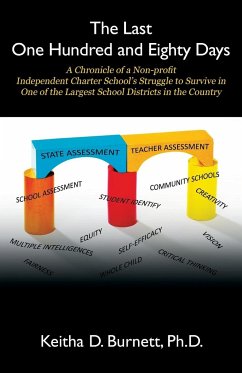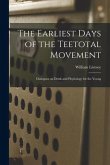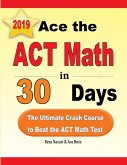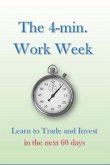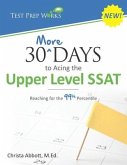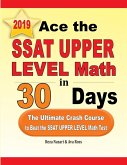If there is case against high-stakes testing, The Last One Hundred and Eighty Days is a must read. This book chronicles the challenges of operating an independent charter school, serving a population with ninety-nine percent of students receiving free or reduced lunch in one of the largest school districts in America. It details the most critical year its history, in which the school must make a passing grade in the midst of constant state changes in the state-wide assessment. One questionable policy that was implemented during this time is the decrease in the number of students that are needed in each grade level for a school to receive a grade. The number decreased from 29 to 10 in spite of the fact that statistically, a population size should hover around 25-30 to increase the reliability and validity of the testing results. Ironically, policies are quickly put in place to prevent any school from dropping more than two letters grades, however, there were no policies put in place to account for schools that are ranked at the bottom, but show substantial gains. Painstakingly, if the elementary school is not successful, the fate of school will negatively impact the middle and high school because they share the same facility and resources. The middle and high school was one of the first secondary charter schools accredited by the Southern Association of Schools and Colleges in the southern region of the county. The overall purpose of this book is to highlight some systemic problems that directly and indirectly affect students, parents, educators, and the community at-large in the trenches, particularly in low-income areas. It is the premise of this book that it is nearly impossible to make a significant difference statistically in the performance of low socio-economic and academic performance within a short timeframe on standardized tests without resorting to data manipulation or other undesirable means. It further suggests that in the quest for accountability, the richness inherent in the education process, particularly at schools that have a high percentage of low-performing students has been lost. We are failing to "educate" all our children. It also suggests that the "creaming effect" that is occurring in poor neighborhoods-that is the skimming of the best students to attend magnet or other county schools-contributes to the erosion of our education system, leaving the perception as a whole that some schools are doing better than others. Following rules and guidelines is not enough to truly address the needs of the neediest students which often leaving educators drained and disillusioned without the desired results. The philosophical basis of the Academy was that that learning reaches its optimal level only when students know and expect that all guidelines and policies are set forth as a basis for all decision-making. This requires clear goals and objectives, consistency, monitoring and feedback, clear disciplinary policies, and strong community and parental support. It is essential for the philosophy of the school to shape the culture of school. Interestingly, Lawrence (1995) found that the type of school (magnet school, magnet program, or traditional school), was not as significant as the degree of self-efficacy of the students. The degree of self-efficacy is determined by a student's perception of control of his/her of their environment and circumstances (Bandura, 1980). The study found students that were at traditional schools with a high degree of self-efficacy generally performed as well academically as their counterparts in magnet programs or magnet schools. Hence, this study suggests that developing a student's self-efficacy is a worthwhile investment academically.
Hinweis: Dieser Artikel kann nur an eine deutsche Lieferadresse ausgeliefert werden.
Hinweis: Dieser Artikel kann nur an eine deutsche Lieferadresse ausgeliefert werden.

